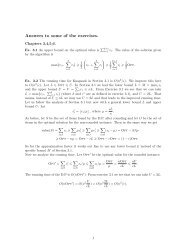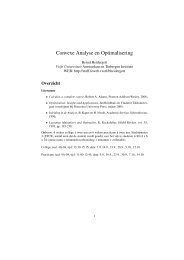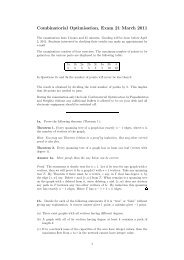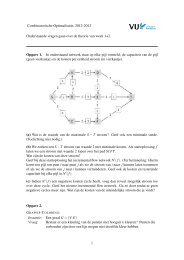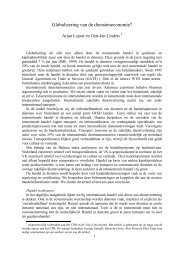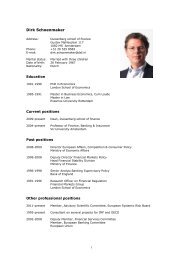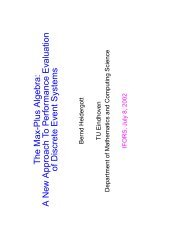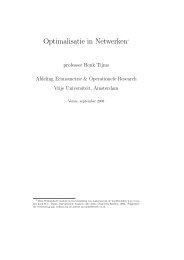Introduction to Local Level Model and Kalman Filter
Introduction to Local Level Model and Kalman Filter
Introduction to Local Level Model and Kalman Filter
You also want an ePaper? Increase the reach of your titles
YUMPU automatically turns print PDFs into web optimized ePapers that Google loves.
<strong>Kalman</strong> <strong>Filter</strong> Derived<br />
◮ Our best prediction of yt based on its past is at. When the<br />
actual observation arrives, calculate the prediction error<br />
vt = yt − at <strong>and</strong> its variance Ft = Pt + σ 2 ε.<br />
◮ The best estimate of the state mean for the next period is<br />
based on both the current estimate at <strong>and</strong> the new<br />
information vt:<br />
at+1 = at + Ktvt,<br />
similarly for the variance:<br />
◮ The <strong>Kalman</strong> gain<br />
Pt+1 = Pt + σ 2 η − KtFtK ′ t.<br />
Kt = PtF −1<br />
t<br />
is the optimal weighting matrix for the new evidence.<br />
◮ You should be able <strong>to</strong> replicate the proof of the <strong>Kalman</strong> filter<br />
for the <strong>Local</strong> <strong>Level</strong> <strong>Model</strong> (DK, Chapter 2).



